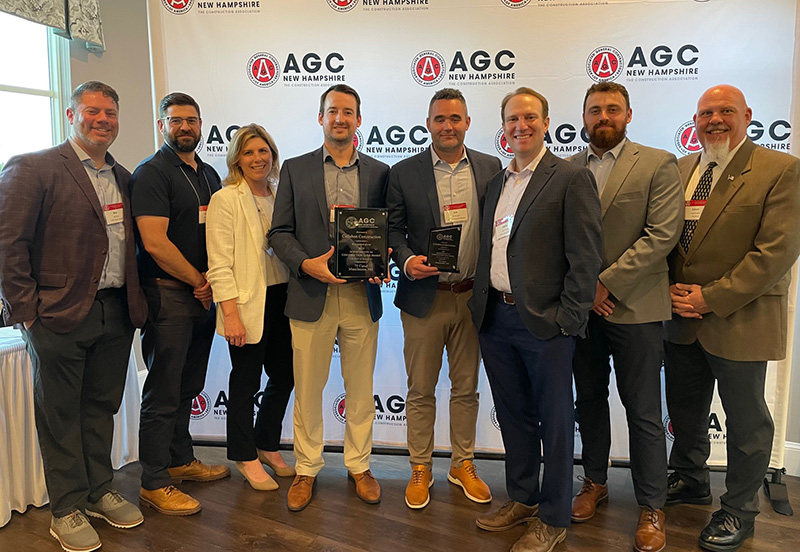News: Construction Design & Engineering
Posted: November 20, 2014
Managing the growing trend of change management
It seems that today every company is trying to change something: work style, organizational process, workspace, branding. The trend is so prolific that it permeates almost every facet of how people are conducting business. Even more intriguing, however, is that this growing trend has generated a new discipline known as "change management."
When one thinks about change, it can be presented in three stages:
* Identifying the need for change and developing solutions;
* Preparing those affected for the adaptation of the change; and
* Facilitating and managing the physical change.
In each step, a different professional skill and talent would likely be necessary to ensure a positive result. Those who are strategic in their expertise, for example, would be most successful in developing solutions. Those with great "people skills" are, of course, the natural choice for guiding those affected through the emotional process of change adoption, and highly tactical professionals are adept at managing the physical change.
Companies are typically compelled to change due to process and organizational challenges or shifting real estate needs. In these circumstances, it is critical to partner with a consultant who is an expert at analyzing the current state and providing clear solutions for improvement. Architects who specialize in the workplace, for example, are trained to evaluate work environments and develop strategic design solutions in response to these challenges. In this role, architects are often the "front line" of change management as they assist clients in identifying which change is the most appropriate and reasonable solution. If a process issue is driving the change, an architect may lead the client through a Lean design process to identify operationally efficient solutions. If there are organizational or cultural influencers present, an architect may educate clients on the available workplace options and designs.
Once a company has worked with an architect and embraced a specific direction for change, it is faced with the challenge of communicating that change to staff and managing the resulting human resource concerns. The degree of change is in direct proportion to the amount of support a company will need from a change management consultant. Dropping workstation panels in height may not require much handholding. However, eliminating all offices will likely demand a very carefully orchestrated change management effort. It is not enough to "sell" and market change to staff; a company must engage employees and solicit their willingness and support to change.
Imagine this example: you are a 20-year, mid-management employee leading a team of 40 people. Your company has announced that it will be shifting to a completely mobile work platform. You suddenly realize that all of your business practices will need to change, and that office you worked so hard for, will soon disappear. This type of change is dramatic and the emotional impact on many people could be intense. A skilled change management consultant is essential in not only coaching employees through the adaptation, but also giving them the proper tools with which to facilitate the change.
When the nature of the change has been agreed upon and those affected are educated and on board, the next step is to physically deploy it. Those who facilitate the change - the project and move management consultants - are critical in ensuring that the physical change is accomplished. While their role in the early stages of change management may be minimal, their involvement in managing the physical change is paramount to a successful outcome.
It is important to note that each of the above professionals play a pivotal role in advancing change for a client. A client attempting a minor change may simply need a project manager. If the change is dramatic or emotional, however, the greatest success is achieved by partnering the architect, change management consultant, and project management team early in the process. Collaboration between these professionals ensures change is developed properly, communicated effectively, and facilitated seamlessly.
As the Greek philosopher Heraclitus said, "The only thing that is constant is change." Thankfully, there are talented professional consultants who are highly skilled at managing that constant.
Joe Flynn, CFM, LEED AP is a senior associate and workplace strategist, Margulies Perruzzi Architects, Boston.
MORE FROM Construction Design & Engineering
Nobis Group awards Robinson and Moreira STEM scholarships
Concord, NH Nobis Group, a 100% employee-owned consulting firm specializing in engineering and environmental solutions across the Northeast, has named the recipients of its 2025 STEM Scholarship: Andie Moreira of
Columns and Thought Leadership

The design-build advantage: Integrated interior design solutions - by Parker Snyder
When it comes to corporate interior spaces for both commercial and industrial projects, partnering with a design-build firm with in-house interior design services can offer clients many benefits. Unlike traditional delivery methods where interior designers operate independently from the design and construction teams, often creating a longer project timeline as cost negotiations and revisions ensue

Ask the Electrician: Is summer a prime time for commercial electrical maintenance?
The answer is “Yes!” While January marks the official new year, many businesses view September as a fresh start. This makes summer an ideal time for commercial property owners to schedule long-term electrical maintenance projects.

The rise of incubators and co-working spaces: The latest in life sciences - by Matt Combs
In recent years, the life science industry has witnessed a shift in how companies operate and innovate. One of the key driving forces behind this transformation is the emergence of incubators and co-working spaces specifically tailored to meet the unique budget and schedule needs of startups.

Careers in Construction Month focus on training and safety - by Joe Camilo
October is Careers in Construction Month, and rarely has it been more consequential. According to our chapter’s national parent organization, the construction industry needs to attract half-a-million new workers in the coming year to meet demand. Addressing that need is a huge job, but we at ABC MA are trying to do our part.








